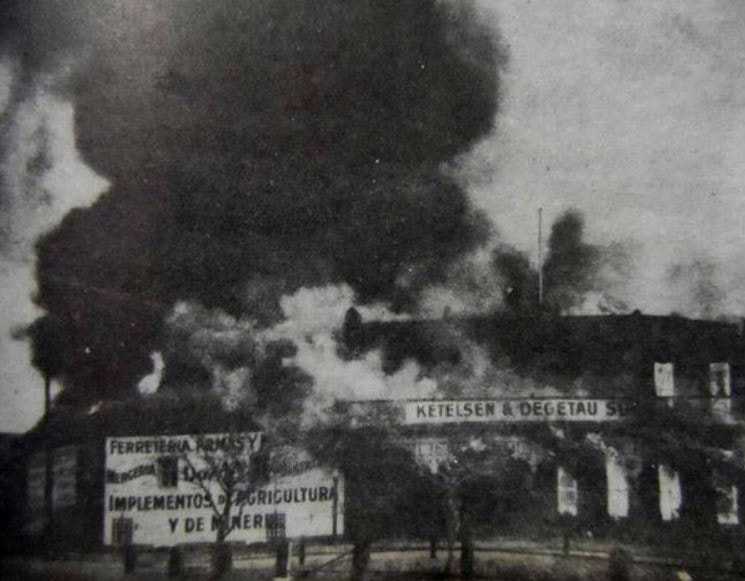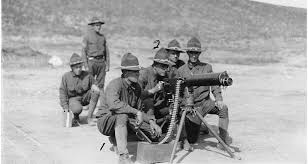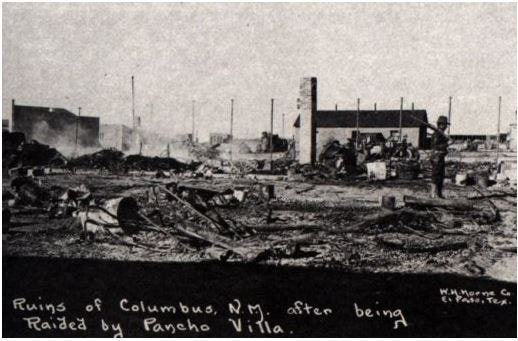 Pancho Villa
Pancho VillaMany people consider 9/11/2001 the day that America lost its feeling of security. But al-Qaeda’s suicide attacks of the four hijacked that crashed into the World Trade Center in New York City, the Pentagon just outside Washington, D.C., and a field in Pennsylvania was not the first time enemies had attacked on American soil. The United States suffered invasions during the War of 1812, the Mexican American War, and in 1916, when Pancho Villa raided the New Mexican town of Columbus.
 Francisco I. Madero
Francisco I. Madero In 1910, Mexico became embroiled in a revolution that was intent on radically transforming its culture and government. It began when the 31-year-long regime of Porfirio Díaz rigged an election against a challenging wealthy landowner named Francisco I. Madero. This led to an armed rebellion that put Madero into power. Madero’s presidency couldn’t unite the people. Conservatives saw him as weak and liberal. Former revolutionary fighters and the dispossessed saw him as too conservative. Madero resigned in February 1913, and was later assassinated.
 Venustiano Carranza
Venustiano CarranzaBacked by business interests and other supporters of the old order, General Victoriano Huerta’s counter-revolutionary regime came to power. In July 1914 a coalition of regional revolutionary forced him out and one of their leaders, Venustiano Carranza, took control with the support of American President Woodrow Wilson.
Not all of the revolutionaries supported Carranza. One of the leaders in opposition was Pancho Villa, the commander of the northern division of the army centered in Chihuahua. Villa had received a lot of support from Americans in the past and was shocked when this support dried up. Lacking military supplies, money, and munitions, Villa’s army degenerated into a disorganized mob that wandered around northern Mexico, foraging, raping, and looting as they went. On March 9, 1916, his troops crossed the border ant attacked the tiny town of Columbus, New Mexico.
Not all of the revolutionaries supported Carranza. One of the leaders in opposition was Pancho Villa, the commander of the northern division of the army centered in Chihuahua. Villa had received a lot of support from Americans in the past and was shocked when this support dried up. Lacking military supplies, money, and munitions, Villa’s army degenerated into a disorganized mob that wandered around northern Mexico, foraging, raping, and looting as they went. On March 9, 1916, his troops crossed the border ant attacked the tiny town of Columbus, New Mexico.
At the time of the attack, New Mexico had only been a state for four years, but that doesn't mean it was a "new" place. Native Americans had lived in it for thousands of years. In 1598 Spain colonized it, but lost it when Mexico gained its independence in 1824. In 1848, at the conclusion of the Mexican-American War, the United States annexed New Mexico as a territory. It was finally admitted to the Union as the 47th state on January 6, 1912. It continues to be the state with the highest percentage of Hispanic and Latino Americans, and still has close ties with Mexico.
Historians still argue about why Villa crossed the border. One theory is that he wanted to punish the United States for withdrawing its support for his cause. Another is that merchants in Columbus had cheated him in an arms deal. Finally, Villa might have been desperate for the arms and horses he though he could get from the raid.
Historians still argue about why Villa crossed the border. One theory is that he wanted to punish the United States for withdrawing its support for his cause. Another is that merchants in Columbus had cheated him in an arms deal. Finally, Villa might have been desperate for the arms and horses he though he could get from the raid.

The day before the attack, a ranch foreman named Juan Favela rode to Camp Columbus, a small post established to patrol the border. Favela warned Colonel Herbert Jermain Slocum, the commander of the 13th Cavalry, that Villa and his forces were in Palomas, a bordertown only three miles south of Columbus. Slocum reinforced the troops at the Border Gate and stepped up patrols along the 65-mile border, but he wasn’t overly concerned. Although not all men were in garrison, the 13th Cavalry Regiment had a headquarters troop, a machine gun troop, and four of the seven rifle troops deployed to patrol the border: 12 officers and 341 men in all. Villa, he was sure, wouldn’t dare attack a force that large. Captured Villistas later revealed that the spies Villa sent into Columbus returned with reports that only thirty or so soldiers were garrisoned at the Camp, however, and this misinformation may have convinced Villa of Columbus’ vulnerability.
 Columbus burning during the raid
Columbus burning during the raidVilla crossed the border about midnight. He took up a position on Cootes Hill overlooking Columbus, and at 4:15 am on the morning of March 9 launched a two-pronged attack on the town from the west and southeast. Most of his 380 man army left their horses with Villa and moved in on foot.
Columbus was a small town, with only a few adobe houses, a couple of hotels, a grocery store, a drug store, a few mercantile businesses and a railway station lining its sandy streets. People in both the town and garrison awoke in the dark to shouts of "Viva Villa!” and “Viva Mexico!" Villa’s army looted the stores and set them on fire. If their proprietors got in the way, they were shot. J.J. Moore, who owned a mercantile shop, was. So was C.C. Miller, the town’s druggist. The fire spread to the Commercial Hotel, where the Villistas robbed people as they fled the burning buildings. Four civilians were killed there, six elsewhere.
Columbus was a small town, with only a few adobe houses, a couple of hotels, a grocery store, a drug store, a few mercantile businesses and a railway station lining its sandy streets. People in both the town and garrison awoke in the dark to shouts of "Viva Villa!” and “Viva Mexico!" Villa’s army looted the stores and set them on fire. If their proprietors got in the way, they were shot. J.J. Moore, who owned a mercantile shop, was. So was C.C. Miller, the town’s druggist. The fire spread to the Commercial Hotel, where the Villistas robbed people as they fled the burning buildings. Four civilians were killed there, six elsewhere.

But Columbus didn’t go down without a fight. Many of the townspeople defended themselves with rifles and shotguns. 2nd Lt. John Lucas heard the noise and, so hastily that he never got into his boots, made his way from his private quarters to the camp's guard tent, where he broke into the lockers that kept his troop's machine guns secure. Lucas set up four emplacements of men, each with a Hotchkiss M1909 Benét-Mercié machine gun. He was soon joined by 30 troopers armed with Springfield rifles.
At first the night was so dark that the soldiers couldn’t see their enemies. The only way to locate Villistas were the muzzle flashes as they fired. As the Commercial’s blaze grew, it backlit the Villistas, making them easy targets. Close to 20,000 rounds were fired from the machine guns during the 90-minute fight.
At first the night was so dark that the soldiers couldn’t see their enemies. The only way to locate Villistas were the muzzle flashes as they fired. As the Commercial’s blaze grew, it backlit the Villistas, making them easy targets. Close to 20,000 rounds were fired from the machine guns during the 90-minute fight.

As the sky lightened, Villa's bugler called a retreat. Villa left behind his dead and wounded and slipped back into Mexico. The dead Villistas and their horses were dragged to a pit, doused with kerosene and set on fire. The lives ones were jailed. All but one were later hanged. Columbus went through a period of intense mourning. The tiny town that no one had heard of was suddenly on the front page of every paper in America. Its notoriety didn’t last long, however. America’s entrance into World War I made a Mexican’s raid on a small border town in a little known state pale into obscurity. Americans wouldn’t feel that vulnerable again until Pearl Harbor.
Jennifer Bohnhoff teaches school in rural central New Mexico. She has written a number of historical fiction novels and is currently at work on one set in Southern New Mexico during the time of the Villa raid.





No comments:
Post a Comment